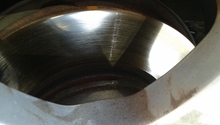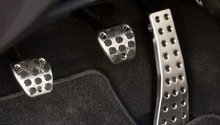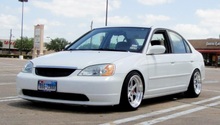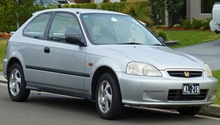Honda Civic: Why Do I Hear a Loud Squeak When Turning the Wheel?
Your car squeaking can sometimes be embarrassing. Luckily, there are only a few issues that can be creating this problem. This article we will help you diagnose the root cause of that wheel squeak.
This article applies to the Honda Civic (1992-2000).
A Civic with a squeak isn't uncommon, but it's always a sign that something, somewhere isn't working quite as it should. Here are a few common issues that can cause squeaks and squeals. The common issues include low power steering fluid, serpentine belt problems, ball joints, bent brake guards, and worn brake pads or rotors.
Step 1 – Power steering fluid low
A system with low power steering fluid will often whine and squeal as the air bubbles move through the power steering system. This effect is especially pronounced when turning, and will be accompanied by increased steering effort during low speeds. Luckily, this is an easy problem to fix.
- If the power steering fluid is low, simply add more to the fluid reservoir. Also, inspect the power steering hoses and reservoir for leaks.
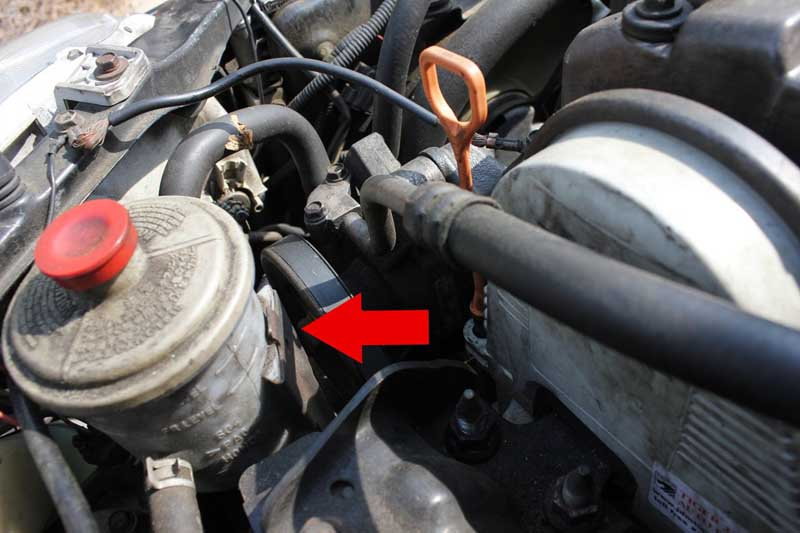
(Related Article: How to Change Power Steering Fluid - Honda-Tech.com)
Step 2 – Serpentine belt issue
A common cause of squeaking or squealing on a car is a serpentine belt issue. If the car makes noise when the engine is turned off, then you can rule this out as a potential issue. A serpentine belt issue will only occur when the engine is on. Here are a few of the issues that can occur with the serpentine belt.
- Bad belt: If this is the case, simply replacing the belt could fix your squeak. A bad belt would have cracks straight across the entire belt. Small random cracks on various areas of the belt should not warrant a belt replacement.
- Misaligned belt or incorrect tension on the belt: Diagnosing a problem like this requires moderate mechanic skills. An easy way to do this is to spray water (from a squirt spray bottle) onto each pulley, while the engine is running. If the noise goes away momentarily, then this is an indication of a misaligned belt issue. If the water doesn't stop the noise at all, then this is a sign of a pulley issue. Check out this video to find out how to properly diagnose a misaligned belt and/or incorrect tension on a belt.
- Bad pulley: The pulleys include the alternator, water pump, power steering, idler, and A/C compressor. When you remove the belt and one of the pulleys doesn't spin easily, then this could be an indication of a bad pulley. You should be able to spin each pulley easily with your hand, and they should spin relatively freely.
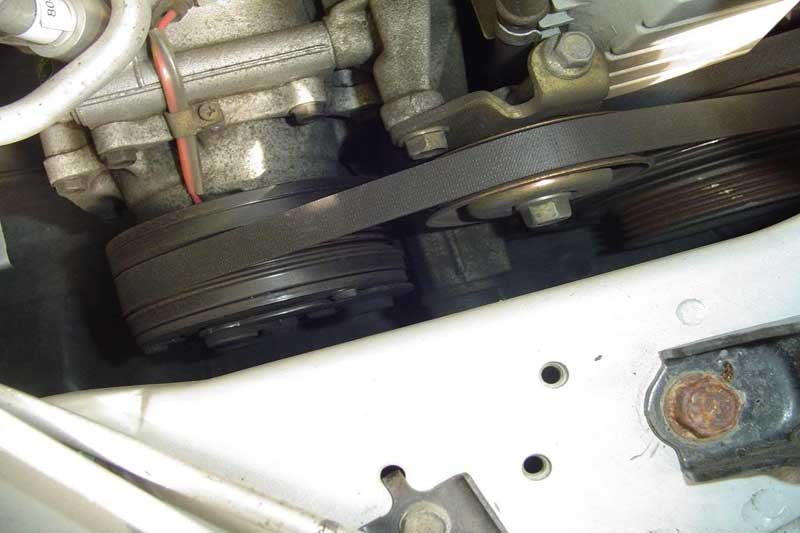
Pro Tip
If you have contaminated fluids (oil or coolant) on the belt, this can also create a noise due to belt slippage. Also, make sure your power steering fluid level is topped off. Sometimes problems have the easiest solutions.
Featured Video: Diagnosing Squeak or Squeal on a Serpentine Belt
Step 3 – Bad ball joints
Check the front suspension's upper and lower ball joints. If they are bad and out of grease, then they will start to make noise as metal rubs against metal. The upper ball joint is located on the upper control arm. The lower ball joint is located at the end of the lower control arm (right below the axle/front brake rotor).
- Make sure they are properly greased: They should have grease boots, so make sure the grease boots are intact. If the boots are torn, then the ball joint is likely out of grease. If the boot looks good, try to re-grease the ball joint.
- Shake, pull and tug on the ball joint location: There should be zero movement on the ball joint. If there is movement, replace that particular ball joint.
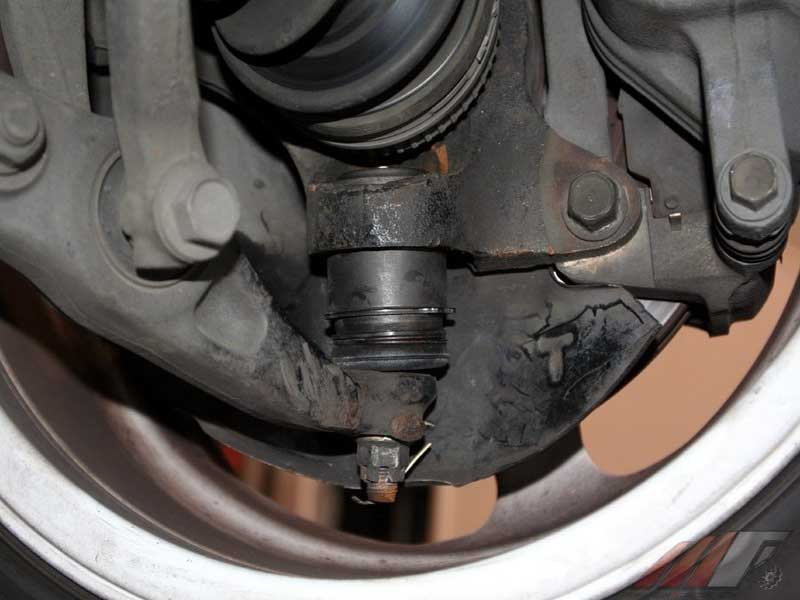
Figure 3. Lower ball joint. 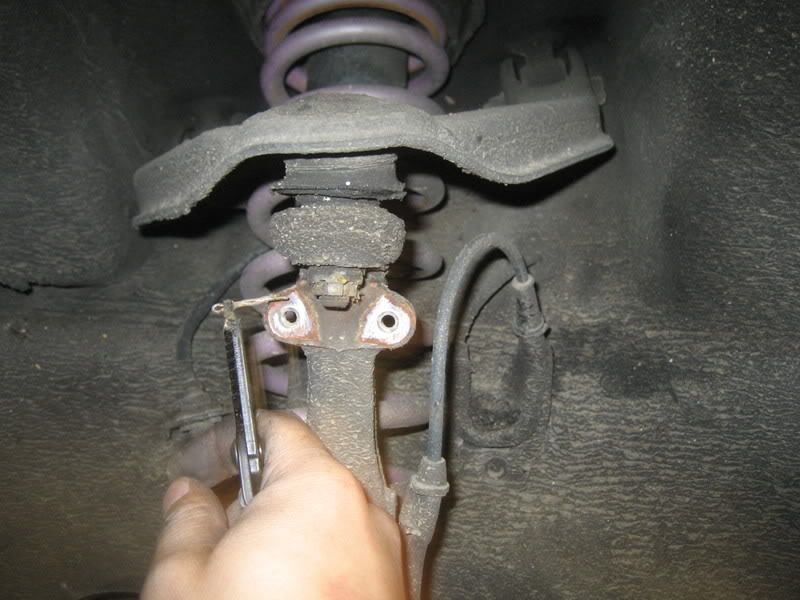
Figure 4. Upper ball joint.
Pro Tip
If the grease boots are torn, the ball joints are almost definitely toasted.
Featured Video: Bad Ball Joints
Step 4 – Bent brake guards
Sometimes, the brake dust guard can be bent from touching the brake rotor. The loud squeaking, squealing noise comes from the brake guard rubbing against the brake rotor, while the car is in motion. This is an easy fix. Remove the wheel to check if the brake guard is contacting the brake rotor. If it is, simply bend it with your hand to move it out of the rotor's way.
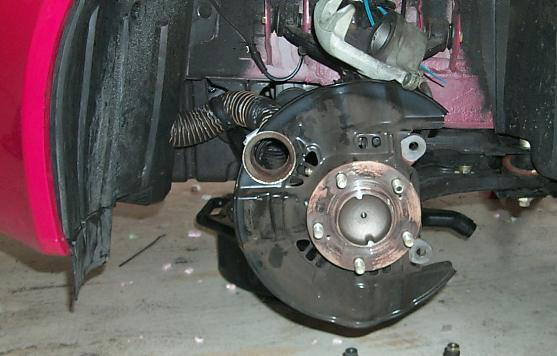
Step 5 – Worn brake pads or rotors
Worn brake pads or rotors can cause squealing and squeaking noises when driving.
- Brake pads should be replaced every 30,000 to 70,000 miles: Consult the owner's manual for the exact change intervals. If they're worn down, they're likely the source of the noise. New brake pads usually come with 1/2 inch of pad material. If the pads are down to 1/4 inch or less, then they are due for a change. The brake tabs could be rubbing against the rotor due to little pad material left. Visually check your brake pads by removing your wheel, and peering through the back of the brake caliper.
- Bad rotors can also cause driving noises: If the rotors have a lot of visual 'rings,' then they might be due for a change. If the grooves and bumps on the rotors' surface can be felt with your finger, then they need to be replaced. Warped rotors should also be replaced, but this will require removing the rotor in order to check. It might be best to have a professional mechanic inspect the rotors if you suspect them to be warped.

Figure 6. Check the brake pad life by looking through the back of the brake caliper. 
Figure 7. An example of a worn brake rotor.
Pro Tip
Remember to resurface your rotors after every new brake pad replacement.
Related Discussion and Video
- Squeak/Creak From Front Ball Joints - Honda-Tech.com
- Honda Civic Squealing Dust Shield Wheel Off - YouTube.com



